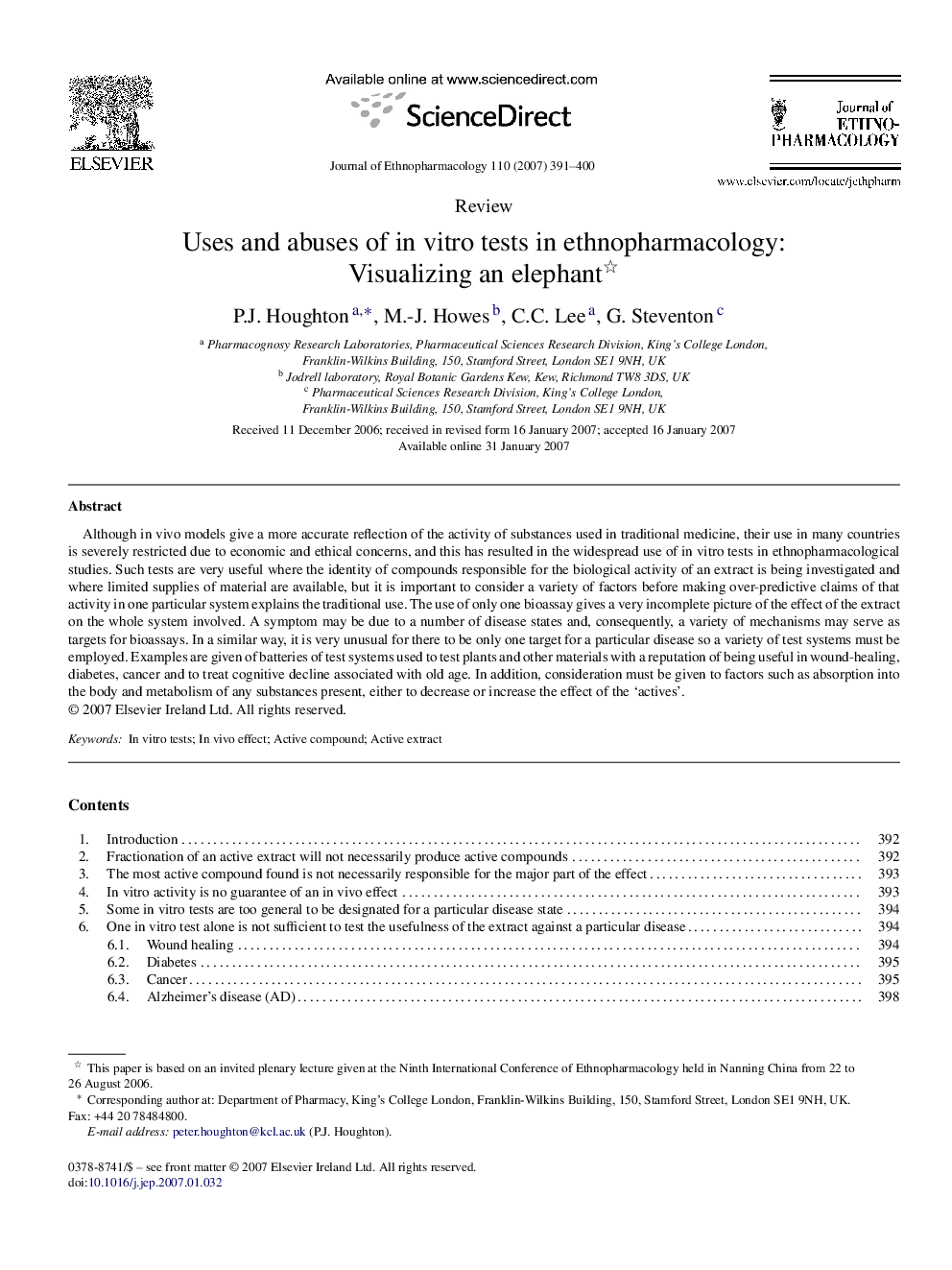| Article ID | Journal | Published Year | Pages | File Type |
|---|---|---|---|---|
| 2547320 | Journal of Ethnopharmacology | 2007 | 10 Pages |
Although in vivo models give a more accurate reflection of the activity of substances used in traditional medicine, their use in many countries is severely restricted due to economic and ethical concerns, and this has resulted in the widespread use of in vitro tests in ethnopharmacological studies. Such tests are very useful where the identity of compounds responsible for the biological activity of an extract is being investigated and where limited supplies of material are available, but it is important to consider a variety of factors before making over-predictive claims of that activity in one particular system explains the traditional use. The use of only one bioassay gives a very incomplete picture of the effect of the extract on the whole system involved. A symptom may be due to a number of disease states and, consequently, a variety of mechanisms may serve as targets for bioassays. In a similar way, it is very unusual for there to be only one target for a particular disease so a variety of test systems must be employed. Examples are given of batteries of test systems used to test plants and other materials with a reputation of being useful in wound-healing, diabetes, cancer and to treat cognitive decline associated with old age. In addition, consideration must be given to factors such as absorption into the body and metabolism of any substances present, either to decrease or increase the effect of the ‘actives’.
